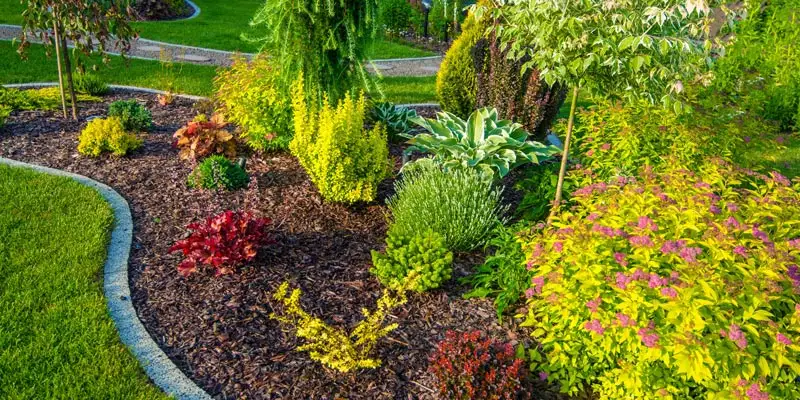7 Simple Techniques For Landscape Design
7 Simple Techniques For Landscape Design
Blog Article
Landscape Design for Dummies
Table of ContentsNot known Details About Landscape Design Landscape Design Can Be Fun For Anyone6 Simple Techniques For Landscape DesignRumored Buzz on Landscape Design
Official style theme. Credit: Gail Hansen, UF/IFAS The yard is an extension of the home where a range of tasks happen. A backyard can typically be separated right into three locations: public (the front yard), personal (the garden), and service (usually the side lawn). The area of activity locations depends primarily on the kind of location, the dimension of room required, the kind of task, and the desired closeness to other activities and structures (Landscape Design).
The outdoors wall surface of the house usually offers as the first wall or starting point of an outside space. Inappropriate uses ought to be separated, and associated activities, such as food preparation and dining, need to be created to make the yard much more reliable and satisfying. When making use of hardscape to create rooms, use building product comparable to that used in your home for connection from your house right into the yard.
Linked spaces. Credit Score: Gail Hansen, UF/IFAS Making use of comparable hardscape attributes and duplicating plants pulls the eye around the garden.
This supplies a feeling of secret that promotes expedition and exploration of the landscape. From a layout viewpoint, plant products have three major features in the landscape: visual, architectural and practical. Visually, plants create an aesthetically enjoyable setting and structurally plants arrange and define areas. Plants are utilitarian due to the fact that they can change the atmosphere for the convenience of the individual by changing light, temperature level and humidity.
The Buzz on Landscape Design
For psychological convenience plants are made use of as physical or implied barriers for privacy and safety and security. Physical obstacles obstruct both the view and accessibility to a space and include fencings, wall surfaces and plant hedges.
Physical and implied obstacles. Debt: Gail Hansen, UF/IFAS For these reasons, the types of plants to be utilized (such as trees, hedges, or groundcovers) need to be picked in the early stages of planning. Plant kinds are picked for their practical capacities so that their future purpose and called for area can be considered at the very same time.
The overhanging plane, the vertical aircraft and the ground airplane should all be considered to create unit. As soon as the form of a plant bed has actually been developed, the plants must be massed (organized) and split to achieve aesthetic unity and the wanted quantity of unit. The dimension of a plant mass will depend on the overall size of the backyard, the dimension of the private plants in the mass, and the emphasis or impact desired from the plant material.
Each plant mass remains in front of, behind, or beside, one more mass. Figure 11. Horizontal plant layers. Credit Report: Gail Hansen, UF/IFAS Figure 12. Upright plant layers. Debt: Gail Hansen, UF/IFAS Duplicating plants within a mass and repeating masses with similar plants ties the yard together. The specific plant features should be considered to efficiently layer and mass plants.
All About Landscape Design
All plant make-ups start with the major framework plants, the large, mostly evergreen background plants-such as the trees and big bushes. These plants different or enframe areas, regulate the dimension of the room, and provide the starting point for selecting the proper attributes of the second layer, midground plants, for massing and infill.
Important factors in the yard need to be highlighted by the use unique plants, unique article structures, or yard accessories. Marking thresholds or entries to rooms can be performed with gates, arbors, and actions, or via using distinct and vibrant plants. The type and/or style theme of the yard will certainly frequently help figure out the important factors and just how they need to be highlighted.
Various other important places in the yard are focal factors, which is made use of to visually organize a landscaped location. Different perspectives or perspectives can reveal different compositions in the landscape that might need a variety of focal factors.
Fascination About Landscape Design
Number 13. Plant forms. Credit: Gail Hansen, UF/IFAS After form, appearance is the next leading function of a plant; crude, medium and great structures can be used for contrast and emphasis in the landscape. Kind and texture both trump shade in the yard for many of the year. However, during specific periods, color will certainly be one of the most visible attribute of the garden.


The positive fragrance of plants, the audio of wind in the trees, the noise and structure of water, and the colors and structures of sculptures, pots and yard furniture all contribute to the experience of the yard. One detail that is usually forgotten is the result of light on the aesthetic appeals of the plants.
The whole garden changes in function and appearance throughout the day, and the course of a year, as the light and temperature level adjustment from morning to night and season to period. Plant choice must consider a plant's development rate, its mature size and kind, and the upkeep it will require.
It is necessary to understand the eventual fully grown dimension of plants so they can be put in the right place and spaced properly when they are mounted. Giving plants area to grow is a challenge due to the fact that the common fully grown dimension is usually based upon ideal Discover More growing conditions and the ecological conditions of a website might create a plant to enlarge or stay smaller he has a good point sized.
Report this page